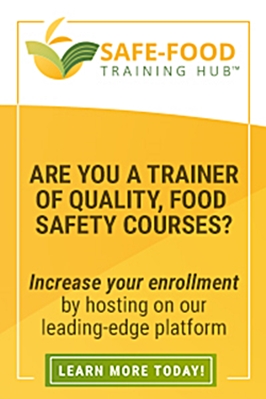Food safety Armageddon: Challenge your product with a worst-case scenario
Ideally, contamination of food is avoided through rigorous quality and safety controls applied consistently throughout the entire supply chain. But what if dangerous bacteria do make their way into a product? Is it inevitable that the product will then make people sick?
Depending on how they’re designed, product formulations, processing techniques and packaging can all help or hinder the growth of bacteria. Vacuum packaging, for example, can starve bacteria of oxygen. Acetic acid, a preservative, has been shown to inhibit bacterial pathogens. And flash freezing or irradiation can decimate harmful invaders. There is no foolproof solution to hindering the growth of bacteria, but precautions can be taken to minimize risk in a worst-case scenario.
Sabotaging bacteria before it can gain a foothold
Like all living organisms, bacteria rely on a healthy environment with an ample supply of nutrients and hospitable conditions to survive. Some bacteria are aerobic and require oxygen; others are anaerobic and need a sealed, air-tight environment. Some bacteria can’t grow in the refrigerator, while others require a cold area.
Bacteria are varied and complex. Scientists have been studying them for many years to find out what makes them die out, grow or thrive. This information can come in very handy when we’re talking about food safety.
Testing for food safety: challenge studies
In the laboratory setting, scientists conduct what are known as challenge studies, where a product is literally challenged with a worst-case scenario by injecting it with harmful bacteria and seeing how it copes.
Depending on the shelf life of the product, the study is evaluated over weeks or months to measure the success rate of the bacterial growth. To mimic real-life risks as closely as possible, the bacterial species chosen are those that have been previously associated with that type of product.
For instance, ready-to-eat meat plants are cold and wet, creating the perfect breeding ground for dangerous Listeria monocytogenous bacteria. So a new cold-cut product might be challenged with the L. mono strain because it’s a risk that is native to its processing environment. The tests may result in changes to formulations, processing or packaging.
The prerogative and best-case scenario is to avoid contamination in the first place. But challenge studies can add an extra layer of safety by optimizing a product’s defenses should the worst-case scenario occur.
——————–
Allie Gallant is a Marketing and Communications Specialist with a passion for food science and technology, and was GFSR’s former Editor. She has covered the agri-food sector for over 5 years.

Categories: Food Science
Tags:



